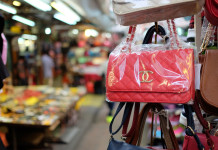The sale of counterfeit household items, such as clothing and shoes, has become part of everyday life in South Africa. Vendors at robots and flea markets make a comfortable living selling what are, in many instances, illegal and sub-standard imports from China. However, the perception exists that this is only in relation to goods such as clothing, sneakers, CD/DVDs, sunglasses, handbags and the like, when in fact television sets, toys, ointments (such as Zambuk), vehicle parts, healthcare products (for example, Viagra) and other medicines, and even gold, are regularly sold in counterfeit form.

Director
Edward Nathan Sonnenbergs
Without doubt, this trade in counterfeit goods affects the genuine goods market. In some instances, the counterfeit product is defective, less robust or even dangerous and may prove disastrous to the reputation of the authentic goods. It is also said that large criminal organizations are involved in counterfeit operations, and that the money earned is used in money laundering schemes and organized drug smuggling activities. Counterfeit goods therefore represent the dark side of intellectual property.
The Counterfeit Goods Act

Director
Edward Nathan Sonnenbergs
The objective of the Counterfeit Goods Act is to offer a practical means of protecting certain rights which are undermined by counterfeiting activities. The rights which are dealt with in this act include those arising from registered trademarks, or well-known trade marks such as McDonald’s, and copyrighted works. Patent and design rights are not, however, afforded protection under this act.
The starting point in understanding how the problem can be tackled under the auspices of the act, is the essential definition of “counterfeiting”. This is defined to mean (a) the manufacturing of goods without the authority of the owner of relevant intellectual property, and the imitation in such manner and to such a degree that those other goods are substantially identical copies of the protected goods. An example of this is the knock-off Gucci bag. The definition also includes (b) the application of the subject matter of the intellectual property right or a colourable imitation thereof, without the authority of the owner of any intellectual property right so that the other goods are calculated to be confused with or to be taken as being the protected goods of the owner. An example here would be the Nike tick on a pair of poorer quality running shoes. And (c) marks prohibited in terms of the Merchandise Marks Act (for example, certain emblems of FIFA).
The act covers a wide variety of activities relating to counterfeit goods and it provides recourse against a broad group of persons including persons who are in possession of such goods for the purposes of dealing in the goods as well as persons who manufacture, distribute and/or import or export the counterfeit goods and who exhibit the goods for the purposes of trade. A person would be guilty of counterfeiting if they knew, or had reason to suspect, goods are counterfeit, or did not take all reasonable steps to avoid any prohibited conduct from taking place.
In the case of AM Moolla Ltd v The Gap Inc, the court was called upon to determine whether the export or import of goods through South Africa (transshipment) fell within the ambit of the activities prohibited under the act. The court noted that transshipment is a concept well-known to lawmakers and that, in ordinary legislative language, a distinction is drawn between “imported into” and “transshipment”. In this instance, the goods, which were imitations of goods in respect of which a trademark had been registered in South Africa, were sourced in Lesotho and Swaziland, and imported through South Africa, to be exported abroad through our ports. In concluding that the transshipment of goods did not fall within the scope of the act, the court said that it was mindful of the fact that this interpretation of the words in the act means that truly counterfeit goods might be transshipped through this country without hindrance. In such an instance, it would therefore not be possible to prevent such goods passing through South Africa, provided these goods were not manufactured, sold, or distributed for the purposes of trade within South Africa.
Immediate seizing of the goods
The benefit of the procedures provided in the act is that they envisage an immediate seizing of the counterfeit goods followed by criminal and/or civil proceedings. It is not necessary for the complainant to prove its case before such seizure takes place. In practice, the holder of a trademark’s most immediate and pressing concern is to put a stop to trade in the counterfeit goods. If it must first prove its case in a court of law before these counterfeit goods can be removed from circulation, its primary goal will have been frustrated. This is the significant advantage provided to such rights holder under the act.
Another useful feature of the act lies in the scope of persons who are empowered to employ these protection measures. It is not only the registered trademark owner which may set the wheels in motion but also a licence holder, importer, exporter, distributor and the agent (including the attorney) of any of these classes of person.
Of course the law does not allow unscrupulous competitors to misuse the provisions of the act to achieve an ulterior motive. In the case of Cadac (Pty) Ltd v Weber-Stephen Products Co and Others, the judges of the Appeal Court said: “The Act does not permit a rights holder to steal a march on an alleged infringer in order to settle a bona fide dispute about the boundaries of rights. Those disputes should be litigated under either the Trade Marks Act or the Copyright Act.”
Once goods are seized, the complainant has an election whether to pursue criminal proceedings and if it fails to do so the goods will eventually be returned to the person from whom they were seized. The onus is on the person from which the goods were seized, if it seeks a more speedy return of the goods, to apply to court to prove that the goods are not counterfeit – this shift in the burden of proof can prove to be very significant in many cases. It also means that the “innocent” party is not put to the expense of legal proceedings unless and until the allegedly guilty party initiates such legal proceedings.
In conclusion, counterfeit is a very serious breach of someone’s intellectual property rights. Obtaining registered trademark protection for all your important trademarks is the first essential step in protecting these assets from exploitation by others. Only then can you take advantage of the protective measures permitted under the act. In addition, it is crucial to remain vigilant against the placement of counterfeit goods on the market, and to act as expeditiously as possible.
Rowan Forster is a director at Edward Nathan Sonnenbergs. Janine Lee is a director at Edward Nathan Sonnenbergs

Johannesburg
150 West Street
Sandton
Johannesburg
South Africa
2196
Tel: +27 11 269 7400
Fax: +27 11 269 7899
E-mail: info@ens.co.za
www.ens.co.za





















